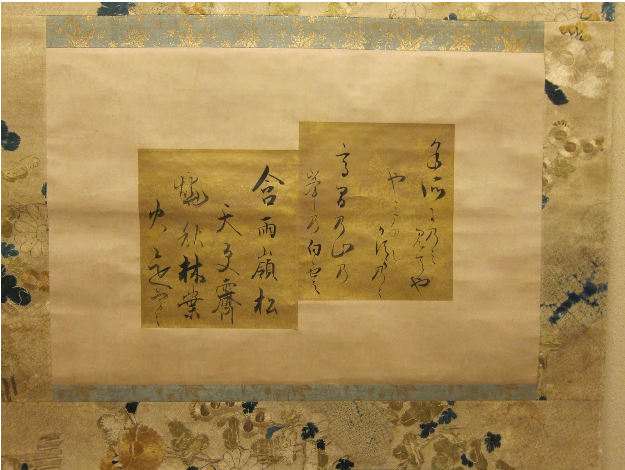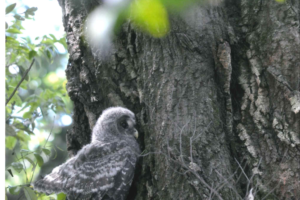
よそにのみ
Yoso ni Nomi
見てややみなん
Mitete ya Yaminan
葛城(かずらき)や
Kazuragi ya
高間の山の
Takama no Yama no
峰の白雲
Minne no Shirakumo


In Heian era, women did not show their face to others, and only men who went steady with allowed to see women’s face.
In other words, gathering male gaze was no exaggeration to say that they were to get married in the era.

Takama no Yama(高間の山) that appears in this song is one of the highest mountains in the Kazuragi(葛城) mountain ranges. This mountain in the poem implies that the woman is of a high social position as compared with the man. In short, this poem is about ‘love between people of unequal social rank’.

For example, Lady Chatterley’s Lover is one of the most famous stories about morganatic affair. Titanic, and Beauty and the Beast are also about a man of low social standing and woman who is of a high social position. (Beast in Beauty and the Beast has high rank though.)


含雨嶺松
Ame wo Fukumeru Reisho wa
天更霽
Ten Sara ni Hare
燒秋
Aki wo Yaku
林葉
Rinyou wa
火還寒
Hi Kaette Samushi

和漢朗詠集 Wakan Ro-ei Shu
This is one of the most famous collections of poems in Japan, that was collected by 藤原公任 Fujiwara no Kintou in 1013.
Wakan Ro-ei Shu consists of vol.1 and vol.2, and it has 588 poems.
In vol.1, poems that are related to seasons are recorded, and other poems are in vol.2.
Once Wakan Ro-ei Shu was published, it became very popular as an example among poets.
In addition, this collection was used as a sample of calligraphy as well and Novels and essays in the Middle Ages were also influenced by Wakan Ro-ei Shu.
As above, it can be say that Wakan Ro-ei Shu is one of the most impactful books in Japan.











Will this love vanish like clouds on the mountain in Kazuragi?
In this article, the detail of this song will be clarified.